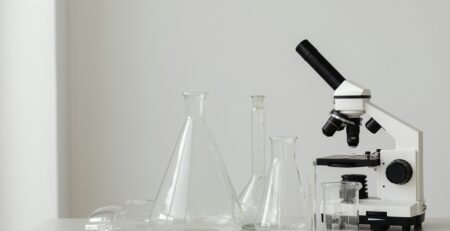4
Sep
Autoclaving Glassware: Best Practices for Safety and Longevity
Autoclaving is the gold standard for sterilising laboratory equipment. Using high-pressure steam at 121–134 °C, it ensures glassware is free from microorganisms before reuse. BORO 3.3 borosilicate glassware, compliant with ISO 3585, is the material of choice for Australian labs thanks to its thermal stability and durability. Following best practices not only guarantees sterility but also extends the life of your laboratory glassware.
Why Borosilicate Glassware Excels in Autoclaving
BORO 3.3 glass is engineered for repeated sterilisation cycles.
- Thermal resistance: Withstands rapid heating and cooling.
- Chemical stability: Resists acids, alkalis, and solvents.
- Mechanical strength: Thick walls prevent breakage under pressure.
- Reusability: Can be autoclaved hundreds of times without loss of accuracy.
This makes borosilicate glassware superior to soda lime glass and many plastics for sterile laboratory work.
Best Practices for Safe Autoclaving
Even with durable glass, proper handling is essential.
- Inspect glassware for chips or cracks before use.
- Do not overfill — leave room for steam expansion.
- Loosen screw caps or stoppers to prevent pressure buildup.
- Place glassware in baskets or trays to avoid direct contact with chamber walls.
- Allow gradual cooling before removal to prevent thermal shock.
Adhering to these practices minimises accidents and prolongs equipment lifespan.
Comparison Table: Borosilicate Glass vs Plastic in Autoclaving
| Feature | Borosilicate Glass (BORO 3.3) | Plastic (e.g., Polypropylene) |
|---|---|---|
| Heat Resistance | Excellent, 121–134 °C steam cycles | Limited, prone to warping/melting |
| Chemical Resistance | Very high, resists solvents and acids | Moderate, may absorb stains or degrade |
| Reusability | Long lifespan, hundreds of cycles | Limited, deteriorates after repeated cycles |
| Sustainability | Reusable, reduces waste | Disposable or short-term use |
| Best Applications | Research, pharmaceuticals, microbiology | Education, routine sterilisation |
FAQs
Q1: Can all borosilicate glassware be autoclaved?
Yes, provided it is ISO 3585 compliant and free from cracks or defects.
Q2: How do I prevent graduation marks from fading?
Use gentle cleaning methods and avoid abrasive detergents to preserve printed graduations during repeated sterilisation.
Q3: Is it safe to autoclave glassware with screw caps?
Yes, but caps should be loosened. PTFE or silicone liners are recommended for chemical compatibility.
Q4: How often can borosilicate glassware be autoclaved?
With proper care, it can be sterilised hundreds of times without compromising accuracy or strength.
References
- ISO 3585: Borosilicate Glass 3.3 — Properties and Standards.
- ASTM E140: Thermal Performance of Laboratory Glassware.
- WHO Laboratory Biosafety Manual, 4th Edition.
- University of Queensland Laboratory Safety Guidelines.
- NIST Chemistry WebBook, National Institute of Standards and Technology.

